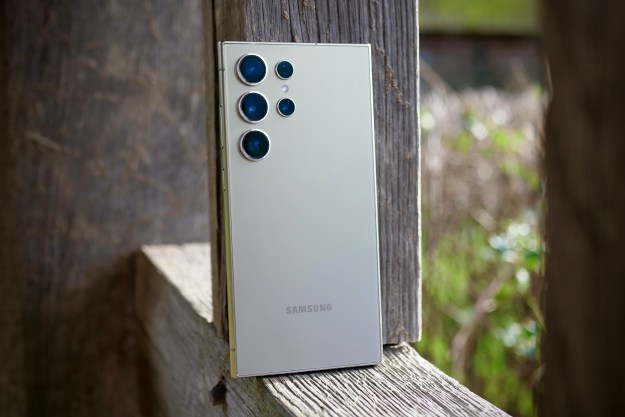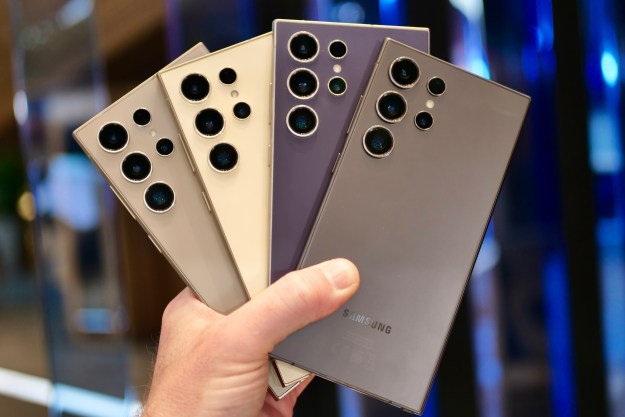In a small room in Gumi, South Korea, an entire football team is balanced on a battery. The battery does not survive.
The room is one of dozens in Building 6 of Samsung’s complex in the manufacturing city of Gumi, a 45-minute helicopter flight south of Seoul. The complex consists of enormous buildings dropped like LEGO bricks onto the ground, each big enough to hold tens of thousands of people – and each sitting directly adjacent to LG’s enormous complex of buildings. The biggest buildings in each group bear signs with company names spelled out in letters as big as those in the Hollywood hills, shooting daggers silently at each other in perpetuity.
The football team is simulated, of course – it’s a battery compression test, a steel chamber where a window lets us watch as a vise applies hundreds of pounds of pressure to a smartphone battery, to ensure it can survive. The test is measured in kilonewtons; one is equivalent to about 225 pounds of pressure, or a high-school linebacker standing on one heel on a battery. Batteries in Samsung’s new Galaxy S8 and S8 Plus smartphone are meant to withstand 13 kilonewtons – picture the 11 players of a high-school football team standing on each other’s shoulders on that battery, plus maybe the coach and defensive coordinator thrown in for good measure.
And the battery itself? Before my eyes a few weeks ago, one of the batteries for Samsung’s new S8 in that steel chamber began smoking, then sparking, and ultimately burst into flames. Was this really happening? Did that battery just fail that test? Was it a dud – or did an entire batch of batteries just go kerflop?
After a few minutes of back and forth, and conversations as heated as the test chamber itself, we learned the truth: Samsung’s test team had dialed the pressure way up to 20 kilonewtons (about 4,500 pounds of pressure), to show us what an explosion would look like.
It’s impressive, and clearly not something you want in your backpocket. And Samsung is doing everything it can to ensure that won’t ever happen again.
New Test Protocols
I came first to Seoul, then on to Gumi in early March to talk with Samsung about its batteries, after the disastrous recall of Galaxy Note 7 batteries that left the company with a billion-dollar blot on its balance sheet and the butt of countless jokes. The Galaxy S8 – unveiled today at a splashy event in New York City’s Lincoln Center – is the company’s flagship, and it needs to be flawless. The key question: How would the company ensure that there wouldn’t be a repeat?
“The Galaxy S8 was in the planning stages for several years … and gone through our toughest safety testing ever, the 8-point battery safety check,” explained Bookeun Oh, VP of Mobile R&D and the man in charge of battery technology development for Mobile division. “Even though the S8 battery has a slightly smaller capacity compared to the S7, the battery life is extended longer than that of S7 thanks to adding energy management software and incorporating energy efficient component.”
The company has learned from its mistakes, in other words, and improved on the technology in the batteries themselves to address problems uncovered in a lengthy post mortem.
Wearing antistatic gloves, they test phones at a furious pace like a pianist working through a concerto, prestissimo
“Furthermore, we focused on maintaining the durability of the battery over the long term, over hundreds of charging cycles. For example, after approximately 6 months of normal usage, the battery in the S8 will outperform previous batteries. While most batteries hold about 80 percent of their charge after 2 years in usual cases, this battery should be capable of 95 percent of its original capacity,” Oh told Digital Trends.
There’s theory and then there’s practice, of course. In theory, the Note 7 batteries were safe too. In Gumi, inside enormous Building 6, I witnessed first-hand how exactly Samsung was implementing a new eight-point safety check.
The Gumi complex is one of nine Samsung plants spanning six countries; the company has made nearly 3 billion phones since 1988, and currently churns out about a million per month.
On the Floor
Inside Building 6, we cover our shoes in protective cloth booties and step onto the factory floor, where conveyor belts and machines were already assembling the first batch of Galaxy S8 phones, destined for America and AT&T and more locally for Korea Telecom.
Manufacturing in Gumi is more robotic than assembly by hand: It takes just 13 minutes for 14 giant machines to join a circuit board and battery, slip it behind a display, and seal it all into a glass and metal housing. It takes 30 minutes total to make the phone, adding in the time required to install the operating system. In that time, only two or three people actually handle any given phone. Instead, robot arms grab components, and robot noses sniff for signs of organic compounds, traces that batteries might be failing. We see a robot cart hauling parts down a corridor, following a path made of silver reflective tape. It plays a tune, and pauses when we step in front of it.
This assembly line has become more automated for this new phone, Samsung tells us, but that doesn’t mean everything is. Much of the battery testing involves humans, and Samsung has clearly rethought the system: There are eight new tests that these phones will go through, in addition to the battery (sorry) of existing tests — life cycle tests, abuse tests, mechanical tests, abnormal charging tests, impact tests, and thermal shock tests.
The new 8-point test plan details new tests, spanning durability, repeated charge/discharge cycles, X-rays, the hunt for something called TVOC, or total volatile organic compounds, and so on. We climb a set of stairs from the assembly line to a different floor, where Samsung unveils one of the new tests: accelerated usage.
After the Note 7 issues, Samsung realized real people use phones in ways that ordinary tests may not accurately simulate. So for first time ever, the company began simulating real world usage to gauge performance. Researchers analyzed consumer usage to uncover patterns: The average consumers browses the web for 31 mins a day, spends 12 minutes texting, talks for about 29 minutes, and so on.
And so, across a five-day test, Samsung’s technicians attempt to duplicate that.
It takes just 13 minutes for 14 giant machines to join a circuit board and battery, slip it behind a display, and seal it all into a glass and metal housing
We see stacks of phones charging and rapid charge and then discharging and repeating the cycle, over and over for entire days. Human testers run through the 44 most common functions on the phone, while an automated system runs through multimedia tests. They dunk the phone in water, and leave it there for 24 hours. We saw technicians running through tests for browsing and texting and emails and calls, with 5, or 7, or even 9 phones at a time. Wearing antistatic gloves, they bring up the same screen on each, select a function on each, moving through each at a furious pace like a pianist working through a concerto, prestissimo.
And on and on, in what seemed to be to be a needlessly confusing loop of tests. Samsung said 50,000 units would go through this test before the phone even hits store shelves – I’m sure they’ll hone the test procedure further in the months ahead.
In another area of the facility, Samsung conducts large scale battery testing. Shelving units sit side-by-side, each with four shelves holding dozens of batteries per shelf, charging and discharging over and over. There are 6,000 devices running when we pass through, Samsung says, although the room can hold 60,000. Cooling fans whir like those in desktop PCs, creating a sound like millions of bees humming away. Note 7 devices are mounted to the top of each shelf, silently watching and recording the test. There are maybe a thousand; Samsung recalled several million.
Learning from past mistakes
The tests roll on and on. There’s a thermal shock test, in which a battery is heated to 70 degrees Celsius (about 160 Fahrenheit) for 7 hours. We see a drop test, where batteries are dropped onto a steel plate 24 times from a variety of angles, from 1.5 meters up (about chest height). A cabinet nearby holds blocks of stone and concrete.
We see the famous butt test, where a simulated tushy in jeans sits on a phone over and over. And the water ingress test — essentially a firehouse aimed at a phone. And the water immersion test: will it survive when you drop it in the toilet?
And twist tests.
And camera tests.
And tests for tests.
DJ Koh is president of Samsung’s mobile division. He took office on Dec. 1, 2015, almost a year before the Note 7 fiasco. It was a dream job, he said, but it turned into a nightmare. The tests are his way of ensuring nothing like this will ever happen again.
“Heaven to hell,” he told me. “I do not want to stay in hell. It’s [been] too long.”
Editors' Recommendations
- 5 phones you should buy instead of the Samsung Galaxy S24 Plus
- 5 phones you should buy instead of the Samsung Galaxy S24
- 5 phones you should buy instead of the Samsung Galaxy S24 Ultra
- The OnePlus 12 has one big advantage over Samsung and Apple
- The Samsung Galaxy S24 just failed a critical durability test




